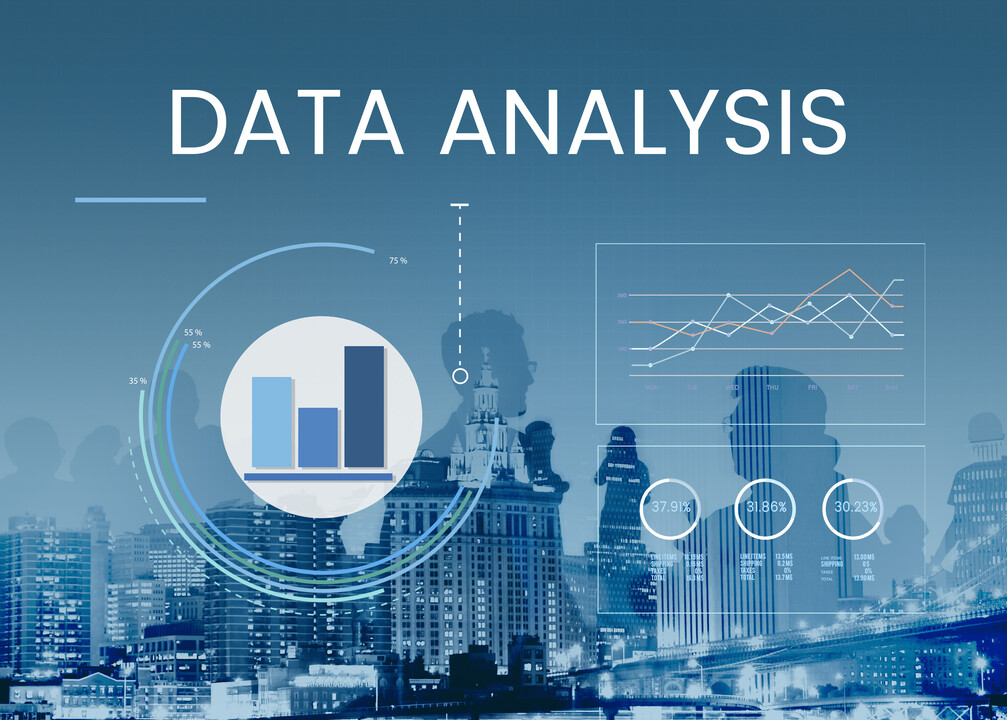In today’s digital age, the way businesses approach marketing is changing rapidly. No longer is marketing an art left to instinct and intuition; now, it’s a science driven by data. Data-driven marketing refers to the use of data and analytics to guide decision-making, optimize strategies, and drive more effective marketing campaigns. As marketing evolves, the role of data becomes increasingly critical in delivering personalized, relevant, and effective marketing experiences for customers.
With advancements in technology and the proliferation of digital touchpoints, marketers now have access to vast amounts of customer data. The challenge lies in effectively collecting, analyzing, and using that data to make informed decisions that drive better results. In this article, we will explore how leveraging analytics in marketing can enhance campaign performance and help marketers stay ahead of the curve.
1. Understanding Data-Driven Marketing
At its core, data-driven marketing revolves around making decisions based on data analysis rather than relying on gut feeling or general assumptions. By collecting data from a variety of sources—such as website analytics, social media, customer feedback, transactional data, and more—marketers can gain insights into customer behaviors, preferences, and pain points.
With this knowledge, marketers can craft tailored campaigns that resonate with their target audience. Data-driven marketing uses tools like customer relationship management (CRM) software, analytics platforms, and artificial intelligence (AI) to collect, store, and analyze this data. The goal is to turn data into actionable insights that optimize marketing strategies, improve customer engagement, and ultimately drive higher conversion rates.
2. The Role of Analytics in Marketing Campaigns
Analytics plays a pivotal role in data-driven marketing. By analyzing data, businesses can better understand their customers, track campaign performance, and refine their strategies. Here’s how analytics can improve various aspects of marketing:
A. Customer Segmentation and Personalization
Effective segmentation is one of the most important aspects of data-driven marketing. With analytics, businesses can divide their customer base into specific groups based on factors such as demographics, purchasing behavior, location, and engagement patterns. This allows marketers to target more specific and relevant messages to each group, rather than relying on generic, one-size-fits-all campaigns.
Example:
- A fashion retailer might use customer data to segment audiences based on factors like past purchases, favorite colors, or size preferences. This allows them to send personalized offers or product recommendations that are highly relevant to each individual, increasing the likelihood of conversion.
B. Predictive Analytics for Future Campaigns
Predictive analytics uses historical data and statistical algorithms to predict future outcomes. By analyzing trends and past behavior, predictive analytics helps marketers forecast future consumer behavior, sales trends, and even the likelihood of a lead converting into a customer.
Example:
- A business can use predictive analytics to identify which customers are most likely to respond to a specific email campaign, allowing them to target the right people with the right message at the optimal time.
C. Real-Time Campaign Optimization
Analytics enables real-time tracking of marketing campaigns, allowing marketers to monitor key metrics such as engagement rates, click-through rates (CTR), and conversion rates. By continuously evaluating campaign performance, marketers can make instant adjustments to improve results. This agility is crucial in the fast-paced world of digital marketing, where things can change in an instant.
Example:
- If a paid ad campaign is not delivering the expected results, marketers can quickly adjust the targeting parameters, messaging, or creative elements of the campaign based on real-time data, ensuring that it performs optimally.
3. Key Metrics to Track for Data-Driven Marketing
The effectiveness of a data-driven marketing strategy is heavily dependent on the metrics and KPIs (key performance indicators) tracked. These metrics help marketers evaluate the success of their campaigns and make data-backed decisions for future improvements. Here are some key metrics to focus on:
A. Customer Lifetime Value (CLV)
Customer Lifetime Value is a crucial metric that measures the total amount of money a customer is expected to spend with a business during their relationship. CLV helps marketers understand the long-term value of acquiring and retaining customers, guiding decisions about how much to invest in customer acquisition and retention.
Why It Matters:
- A higher CLV indicates that customers are staying longer, making repeat purchases, and contributing significantly to business revenue.
B. Conversion Rate
The conversion rate is the percentage of visitors who take a desired action, such as filling out a form, making a purchase, or signing up for a newsletter. This metric indicates the effectiveness of marketing campaigns in driving customer actions.
Why It Matters:
- A high conversion rate shows that your marketing efforts are compelling and aligned with customer interests, while a low conversion rate may suggest that something is not working in the campaign.
C. Click-Through Rate (CTR)
CTR measures the percentage of people who click on an ad or a link within a piece of content. It helps evaluate the effectiveness of your messaging and creative elements, indicating how well your content resonates with your audience.
Why It Matters:
- A high CTR suggests that your content or ads are engaging and attracting attention, while a low CTR may indicate that you need to refine your messaging or targeting.
D. Return on Investment (ROI)
ROI measures the profitability of your marketing efforts by comparing the revenue generated against the costs of the campaign. This metric is essential for evaluating the overall effectiveness of your marketing strategy.
Why It Matters:
- ROI helps marketers determine whether their marketing budget is being spent effectively and if their campaigns are generating enough value to justify the investment.
4. How to Implement a Data-Driven Marketing Strategy
Successfully implementing a data-driven marketing strategy requires several steps:
A. Collect Quality Data
The first step is to gather relevant and accurate data from multiple sources. This could include website analytics, CRM systems, social media platforms, customer feedback, and email campaigns. Using the right tools and technologies to collect and store data ensures that the information you work with is reliable.
Tip: Utilize tools like Google Analytics, HubSpot, or Salesforce to streamline data collection and ensure you’re capturing the right data to inform decisions.
B. Analyze the Data
Once you’ve collected the data, it’s time to analyze it. Use data visualization tools and analytical software to identify patterns and insights. Look for trends in customer behavior, preferences, and interactions with your brand. These insights will inform your campaign strategy.
Tip: Use tools like Tableau, Power BI, or Google Data Studio to analyze and visualize your data.
C. Develop Targeted Campaigns
With insights from the data analysis, you can segment your audience and craft tailored marketing campaigns that address the specific needs and interests of each group. Personalization is key in data-driven marketing, as customers are more likely to engage with content that resonates with them.
Tip: Use email segmentation and dynamic content in your campaigns to ensure that your messages are personalized and relevant to each customer.
D. Continuously Optimize Campaigns
After launching your campaign, continuously monitor its performance using real-time analytics. Track key metrics and make adjustments as needed. Testing and iterating based on data will ensure that your campaigns are always improving and delivering the best results possible.
Tip: A/B test your campaigns regularly to see which elements (e.g., subject lines, creative, CTAs) perform the best and refine your strategy accordingly.
5. The Future of Data-Driven Marketing
As technology continues to evolve, the future of data-driven marketing will be shaped by innovations like artificial intelligence, machine learning, and automation. Marketers will have even more tools at their disposal to predict customer behavior, personalize content, and create highly targeted campaigns.
AI and Automation: With the increasing use of AI, marketers will be able to automate many aspects of their campaigns, from content generation to customer interactions. This will allow for greater efficiency and scalability.
Enhanced Personalization: Data-driven marketing will continue to focus on delivering hyper-personalized experiences. With more granular data available, businesses will be able to deliver the right message, at the right time, to the right person.
Privacy Considerations: As data privacy becomes more important to consumers, marketers will need to navigate challenges such as GDPR compliance and the ethical use of customer data. Transparency and trust will be vital in building lasting customer relationships.
Conclusion
Data-driven marketing is no longer a luxury but a necessity for businesses looking to stay competitive and engage customers effectively. By leveraging analytics to inform decisions, marketers can create personalized, relevant, and impactful campaigns that drive better results. With the right tools, strategies, and insights, businesses can make data work for them, ultimately boosting their campaign performance and achieving long-term growth.
Key Takeaways:
- Customer Segmentation & Personalization: Data helps create targeted, personalized campaigns that resonate with specific customer segments.
- Real-Time Optimization: Analytics allows for ongoing adjustments to marketing campaigns, ensuring they remain effective throughout their duration.
- Predictive Analytics: By analyzing past behavior, predictive analytics can help marketers forecast future trends and customer actions.
- Metrics Matter: Key metrics such as CLV, conversion rates, CTR, and ROI help measure the effectiveness of marketing campaigns and inform future strategies.
- Continuous Improvement: Data-driven marketing is an iterative process—ongoing testing and optimization are crucial to maximizing campaign performance.
Embracing data-driven marketing empowers businesses to make informed decisions, drive higher engagement, and deliver measurable results. The more businesses leverage data, the more they can refine their strategies and improve customer experiences.

